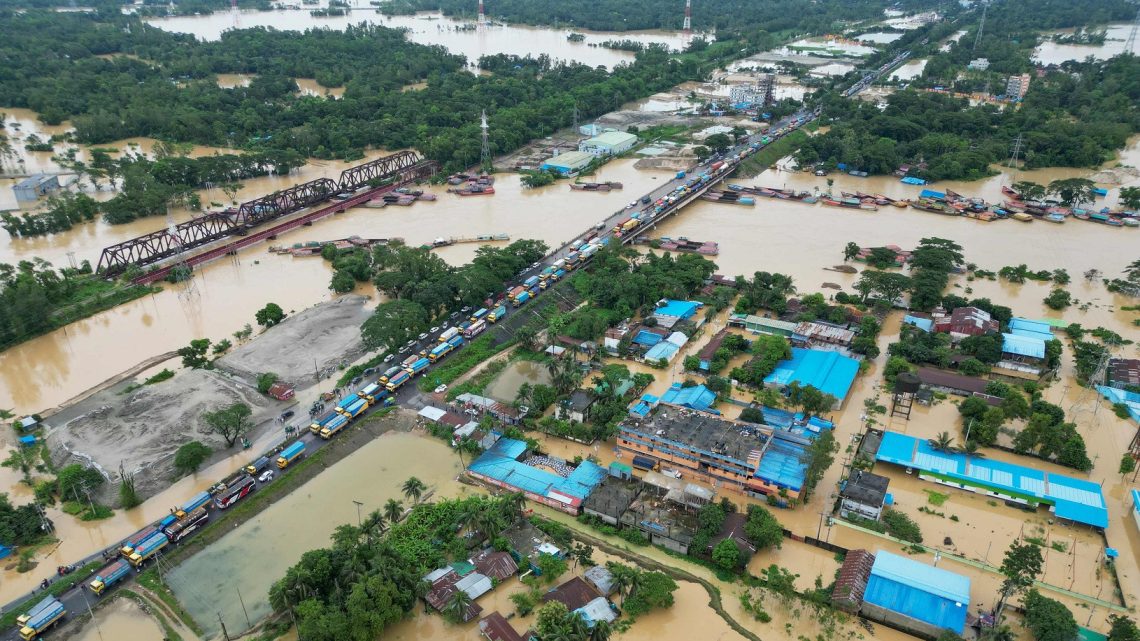
Bangladesh Blames India for Flooding and Making Millions Homeless
August 29, 2024Bangladesh has raised concerns over the recent floods devastating its eastern border districts, stating that the disaster was triggered by the release of water from the Indian Dumbur dam upstream of the Gumti River in Tripura.
Bangladeshi officials and local media have pointed fingers at the Indian authorities, blaming the opening of the dam for the severe flooding that has stranded millions and caused widespread devastation in several areas bordering Tripura State.
Bangladesh residents have expressed shock at the severity of the flooding, with many stating that they have not witnessed such massive flooding in the last 37 years. The floods have stranded over three million people, causing widespread devastation, particularly in the districts of Feni, Parshuram, Fulgazi, and Chhagalnaiya, with significant impact on the Chhota Feni River and the Muhuri, Silonia, and Kahua rivers.
Bangladeshi officials claim the dam’s water release has exacerbated the flooding, a charge India’s Ministry of External Affairs (MEA) refutes, attributing the crisis to heavy rainfall in the Gumti River’s catchment areas. The MEA noted that water releases from the Dumbur Dam were automatic and data had been shared with Bangladesh until communication was disrupted by flooding. The Indian ministry explained that in the event of heavy inflow, automatic releases of water have been observed at the dam. “Amarpur station is in part of a bilateral protocol under which we are transmitting real-time flood data to Bangladesh,” the MEA spokesperson added.
While the MEA stated that real-time data was shared with Bangladesh until communication was disrupted, the lack of contingency plans for such disruptions suggests a significant oversight. The inability to ensure continued transmission of critical information during a crisis may have exacerbated the situation, raising concerns about the effectiveness and reliability of the bilateral protocol in place. This lapse could imply either a lack of preparedness or insufficient prioritization of emergency communication.

